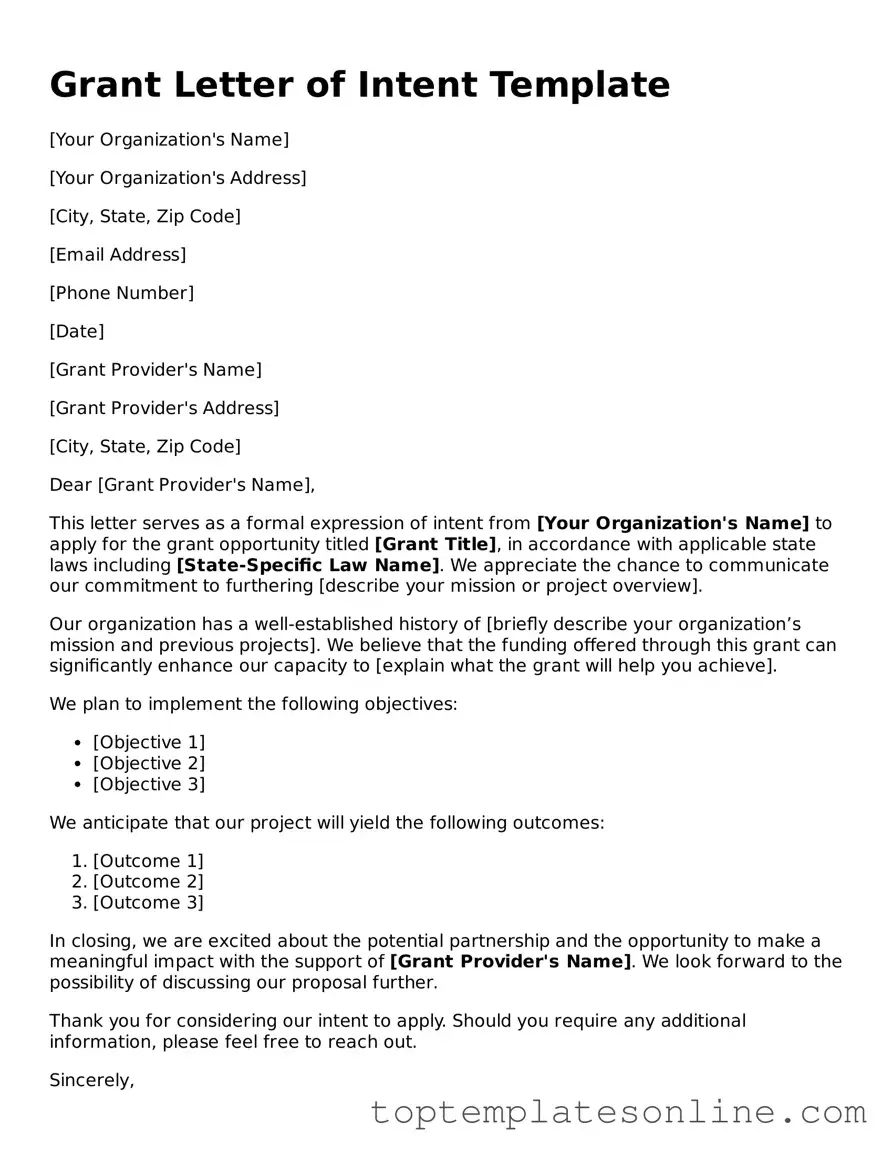The Grant Letter of Intent (LOI) form serves as a crucial preliminary step in the grant application process, enabling organizations to express their interest in obtaining funding for specific projects. This document typically outlines key elements such as the project’s purpose, the target population it intends to serve, and the anticipated outcomes. Additionally, the LOI often includes a brief overview of the organization’s qualifications and relevant experience, which helps grantors assess the applicant’s capability to successfully execute the proposed initiative. By succinctly summarizing the project’s goals and the organization’s strengths, the LOI facilitates initial communication between applicants and funding bodies, allowing for a streamlined review process. Furthermore, many grantors use this form to determine whether to invite a full proposal, making it a pivotal component in the grant-seeking journey. Understanding the essential components of the Grant Letter of Intent is vital for organizations aiming to secure funding and effectively communicate their mission and objectives to potential funders.
